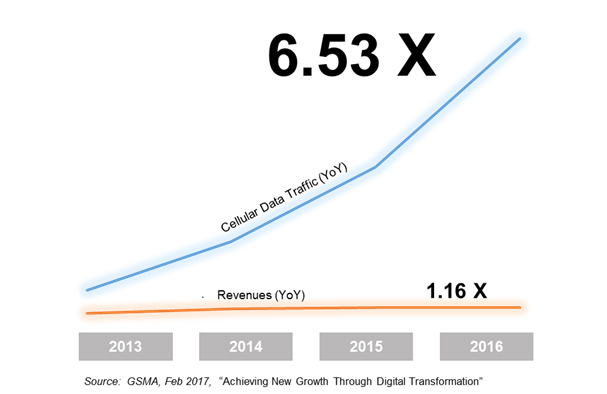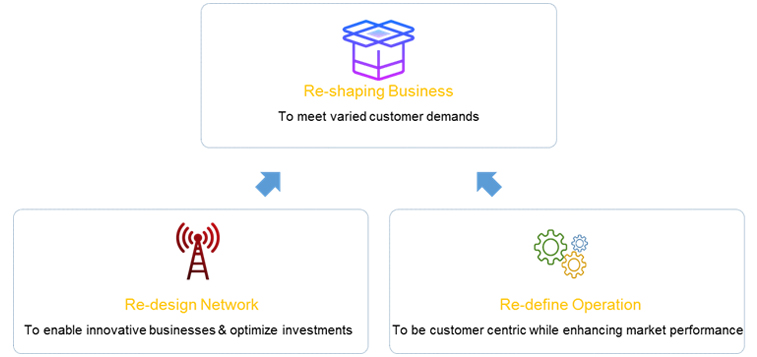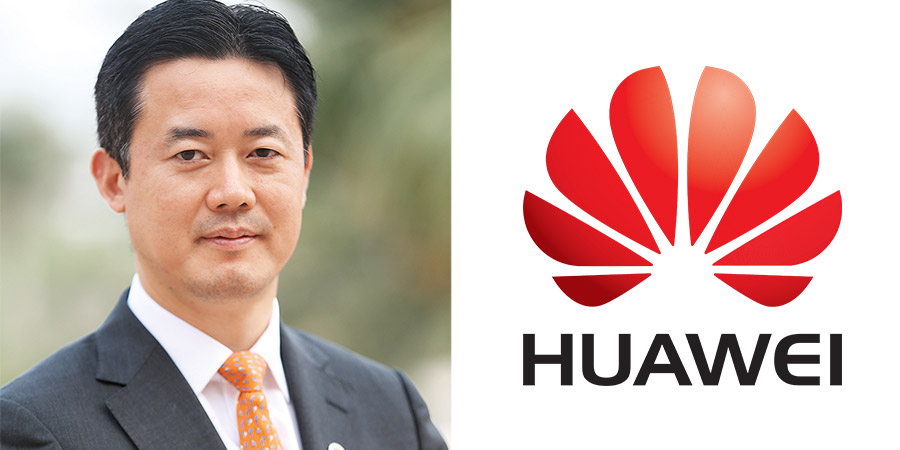In the telco industry, it seems the words of the ancient Greek philosopher, Heraclitus, are ringing true: "The only constant is change."One challenge that we grapple with today is understanding the role of 'digital' in our future, and how digital transformation can bring profitable growth to our industry, from three angles of business, network and operations.
By Charles Yang, President, Huawei Middle East
Digital transformation enables new revenue streams by monetizing our unique assets
The rules of the game are changing rapidly. Facing this, we need to fundamentally re-evaluate our entire business model.
From 2013 to 2016, GSMA reported a 6.53x growth in data traffic vs. only 1.16x growth in global data revenues. Every year, operators surrender more revenues to digital-native companies because they continue to be stuck providing only connectivity, monetizing the network but not the services, data, infrastructure and other valuable assets. These assets still just enable 'backend' support functions, but in fact having the potential to be major sources of value in their own right. The key challenge today is to quickly expand across the digital value chain and gain new sources of revenue by using all the available assets to add unique value in the new digital ecosystem.

In a recent survey we did in collaboration with IDC, we saw 56 percent of the respondents were looking to expand market offerings, while 58 percent highlighted enterprise IT & connectivity, video and IoT as their top three markets apart from traditional mobile voice and data. Seventy-two percent are expecting a transformation timeline of three to six years. That's a long time in today's ever changing business environment and we believe that with the right focus and right partners, we can achieve this faster.
How to achieve digital transformation faster
Over the next three years, Huawei will invest $1bn to accelerate digital transformation in telco industry. Our aim is to support accelerated sustained profitable business growth in new digital services for B2C and B2B. I'd like to share three approaches for telcos to regain profitability and what Huawei is doing to support this.

- "Reach across the value chain"| Reshaping business
This is the ultimate objective of digital transformation, which rests on the foundation of world-class network and operation: creating new revenue streams, so as to build a balance between traditional, stable but slow-growth services and rapid growth emerging services. The direction needs to be re-evaluated if the change does not result in better services for our customer.
From the service point of view, there are four categories are undergoing vibrant changes; they are ultra-broadband, enterprise IT & connectivity, video and IoT. Of course, each has a unique requirement on the network, but beyond that, each service can be enhanced significantly by combining with partners and global platforms that support myriad business relationships.
IoT is a good example. Huawei is building a collaborative environment, a network of 'OpenLabs' and a community of industry players at the local and global levels to champion the development of an IoT ecosystem that enables telcos to establish new revenue streams by re-using their existing network infrastructure. In doing so, we are helping telcos to move to the center of the IoT value chain by providing platforms, not simply connectivity.
As digital transformation gets underway in our industry, we are seeing more and more examples of telcos partnering with OTTs, content providers, healthcare providers and others. Our focus is threefold: provide the most flexible platforms for partner engagement; bring our experience, relationships and industry engagement to our customers; and provide the tools needed for effective partner operations. - "Be the Best at what you do"| Redesigning the network
Fundamental to delivering value is a world-class network, and fundamental to a world-class network is powerful infrastructure which is composed of industry-grade platforms, orchestration, analytics and BSS. Consumers and enterprises want the best connectivity and the tailored solutions. New network technologies appearing in today's journey to 5G are enabling new service categories through three core network use cases: low latency, machine-type communications and extreme MBB. This opens up new revenue opportunities in QoS differentiation (speed-boost); home broadband over wireless (WTTx); on-demand critical enterprise connectivity (e.g. in healthcare or manufacturing), video and IoT.
But delivering this world-class network while controlling costs requires precise planning. Huawei's approach is to apply powerful big data intelligence to network and service planning and operations. Our U-vMOS platform is one example, where data from actual customers is combined with thousands of network KPIs, providing a powerful real-time understanding of video service performance and a multi-dimensional network planning tool for precise network expansion. U-vMOS can enable 40 percent growth in video revenues alongside improved profitability for operators.
Here is the first opportunity to turn a backend system into a source of value. The very intelligence we need for planning is hugely valuable insight into customer behavior, which in turn generates significant new revenue streams for telcos like China Unicom Shanghai who monetize this insight with partners in advertising, city planning and many other sectors. Data Itself is perhaps the most valuable telco asset.
- "Be an innovator"| Redefining operations
As the world-class network depends on intelligence to open new revenue streams and serve customers while remaining profitable, and the data itself exposes ways of serving customers in a much more agile, personalized, real-time way, so agile operation tools can empower businesses to serve customers better.
Empowering the business requires agile operational tools and powerful customer interaction capability. Telcos need to deliver compelling, personalized value propositions based on real-time behavioral data, and customers need to be empowered to configure their own services on-demand. The constant interaction between customers and service providers is a continuous learning process and results in continually optimized service delivery. The end result is continuous improvement in ARPU, NPS and loyalty, and the realization of a ROADS customer experience.
Here is the second opportunity to turn backend systems into value. The very channels for customer communication that support this can be shared with partners that want to reach out to precise consumer segments. Huawei is enabling this openness, helping telcos create new B2B revenue streams from a diverse range of partners. Operational tools are a powerful telco asset that should be shared with the outside world as ecosystem platform capabilities.
Huawei's unique value in digital transformation
At the 2017 Operations Transformation Forum (OTF) in Hong Kong, we announced a further $300m commitment to data-driven consulting and systems integration services to help our customers define their operational transformation strategy and integrate agile operational tools into their businesses.
For a long time, we have been working in lockstep with telcos to achieve innovative breakthroughs. Many of our 80,000 R&D staff (almost 45 percent of total staff) are involved in cutting edge research at over 15 global OpenLabs, where telcos, vendors and business partners collaborate to build solutions to the biggest challenges in our industry.
We have established a digital ecosystem that enables us, together with hundreds of partners in the software, device, content and other domains to build industry solutions tailored specifically for our telco customers.
This industry is changing very rapidly, and our mission is to help our telco customers thrive in the new digital era. Our experience center in Dubai showcases some of our achievements, and our thinking of the road ahead. If you're interested in having a conversation, join us in Dubai to discuss how we can build new digital value chains together.
